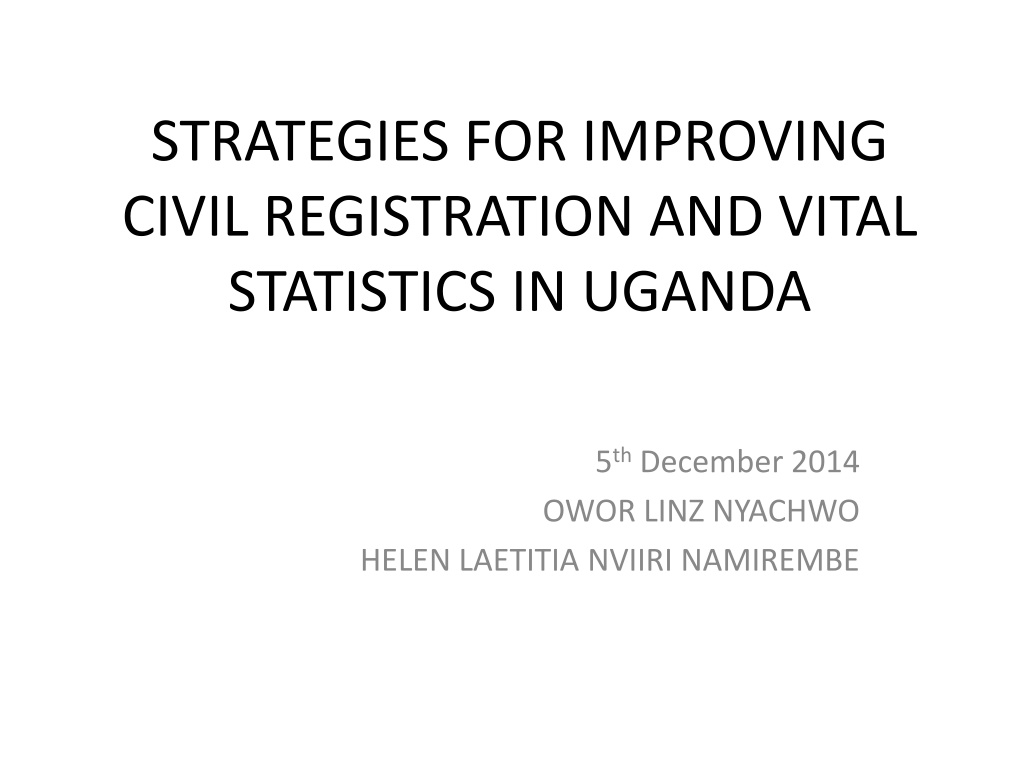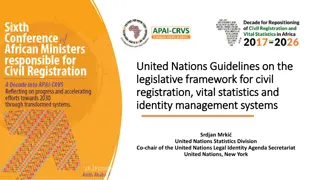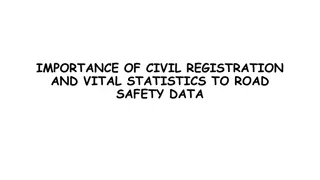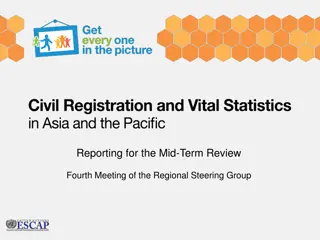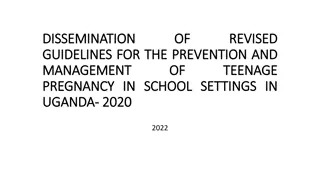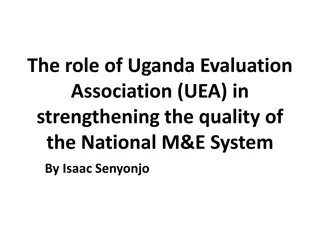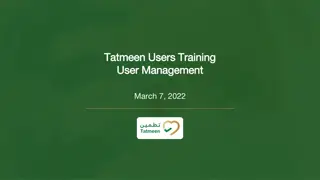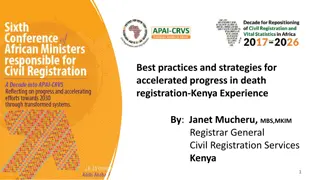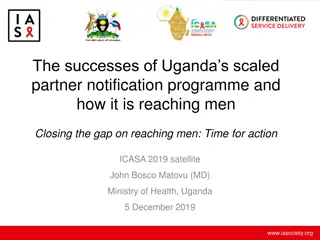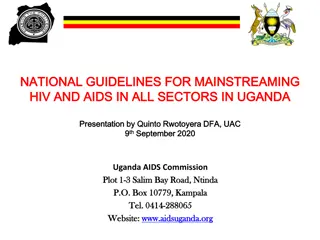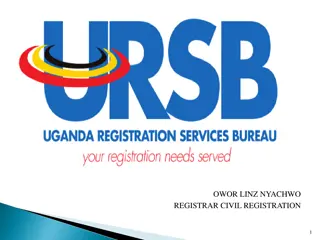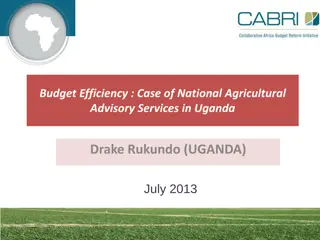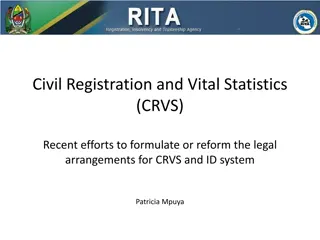Strategies for Improving Civil Registration in Uganda
Strategies for enhancing civil registration and vital statistics in Uganda, focusing on current bottlenecks and desired business processes. Addressing challenges such as lack of policies, financial constraints, and insufficient political support is essential for improving birth registration accuracy and efficiency.
Download Presentation

Please find below an Image/Link to download the presentation.
The content on the website is provided AS IS for your information and personal use only. It may not be sold, licensed, or shared on other websites without obtaining consent from the author.If you encounter any issues during the download, it is possible that the publisher has removed the file from their server.
You are allowed to download the files provided on this website for personal or commercial use, subject to the condition that they are used lawfully. All files are the property of their respective owners.
The content on the website is provided AS IS for your information and personal use only. It may not be sold, licensed, or shared on other websites without obtaining consent from the author.
E N D
Presentation Transcript
STRATEGIES FOR IMPROVING CIVIL REGISTRATION AND VITAL STATISTICS IN UGANDA 5thDecember 2014 OWOR LINZ NYACHWO HELEN LAETITIA NVIIRI NAMIREMBE
Institutions Government hospitals Missionary hospitals Industrial hospitals Health Centre IVs Private hospitals not included as they are not registration Districts under the Births and Deaths Registration Act, Cap 309 Laws of Uganda
CURRENT BIRTH REGISTRATION BUSINESS PROCESS Information is sent to the Records Unit/Dept for data entry on a daily basis Ward Superviser/In charge (maternity ward) is the notifier Live Birth occurs Short birth certificate is issued by Hospital administrator (in case of complete registration). Data is electronically uploaded on the Mobile Vital Records System (MVRS) and instantly transmitted to URSB database long birth certificates issued by URSB upon demand/request by interested persons
Bottlenecks in the current process Lack of a BDR policy Numerous incomplete registrations due to lack of name of child. (due to cultural hindrances) Financial constraints Direct and indirect costs (materials, transport) Unstable internet supply- affecting MVRS Hospitals are not directly accountable to the Registrar General. The birth registration data is not representative of the entire country. Lack of political support. BR not priority
Bottlenecks cont Centralization of services offered by the Registrar General. High costs involved in obtaining a long birth certificate Lack of awareness both by the public and by the duty bearers High turn over of the duty bearers (principle notifiers and data entrants) Existing manual records not synchronized with the birth registration data uploaded using the MVRS Archaic laws
Desired birth registration business process Data on births is electronically uploaded on MVRS and instantly transmitted to URSB database Ward Supervisor notifies of occurrence of birth Live Birth occurs Birth registration data is transmitted to by URSB to UBOS Long birth certificate issued by Hospital Administrator Birth registration data used to inform vital statistics
Strategies 1. Sensitization and awareness campaigns 2. Advocacy for resource mobilization 3. Speed up efforts for develop BDR policy and comprehensive Civil Registration strategic plan 4. Law reform 5. BDR should be included as a key result area and should be part of the performance appraisal for the duty bearers 6. Decentralization of services.
